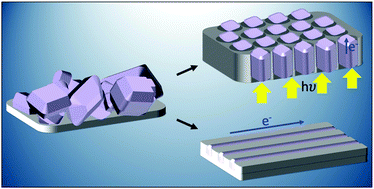Nanoconfining solution-processed organic semiconductors for emerging optoelectronics
Abstract
Solution-processable organic materials for emerging electronics can generally be divided into two classes of semiconductors, organic small molecules and polymers. The theoretical thermodynamic limits of device performance are largely determined by the molecular structure of these compounds, and advances in synthetic routes have led to significant progress in charge mobilities and light conversion and light emission efficiencies over the past several decades. Still, the uncontrolled formation of out-of-equilibrium film microstructures and unfavorable polymorphs during rapid solution processing remains a critical bottleneck facing the commercialization of these materials. This tutorial review provides an overview of the use of nanoconfining scaffolds to impose order onto solution-processed semiconducting films to overcome this limitation. For organic semiconducting small molecules and polymers, which typically exhibit strong crystal growth and charge transport anisotropy along different crystallographic directions, nanoconfining crystallization within nanopores and nanogrooves can preferentially orient the fast charge transport direction of crystals with the direction of current flow in devices. Nanoconfinement can also stabilize high-performance metastable polymorphs by shifting their relative Gibbs free energies via increasing the surface area-to-volume ratio. Promisingly, such nanoconfinement-induced improvements in film and crystal structures have been demonstrated to enhance the performance and stability of emerging optoelectronics that will enable large-scale manufacturing of flexible, lightweight displays and solar cells.

- This article is part of the themed collection: Nanoconfinement


 Please wait while we load your content...
Please wait while we load your content...